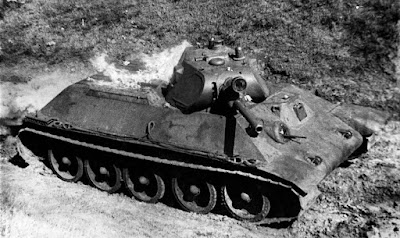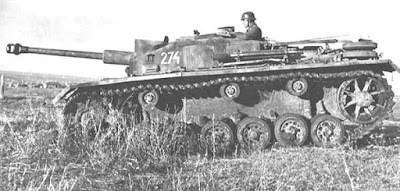 After the German invasion of France and the Atlantic blockade against the United Kingdom, the Australian Army could not receive any modern tank from Europe, the situation gets worse with the eminent threat from Japan forcing the Australians to develop their own tank.
After the German invasion of France and the Atlantic blockade against the United Kingdom, the Australian Army could not receive any modern tank from Europe, the situation gets worse with the eminent threat from Japan forcing the Australians to develop their own tank. The development of the first Australian Cruiser tank (AC 1) started in 1940, after many changes in design and overcoming industrial limitation the final specifications for the AC 1 Sentinel has been recorded as a tank with 28 tons, operated by a crew of 5 men (driver, aux. driver, gunner, loader and commander), with an armor up to 65 mm thick and an unconventional 3x 100 hp Cadillac 346 V8 engine with a combined power of 300 hp and a top speed of 48 kmh. The turret housed a 40 mm QF 2 pdr and a water-cooled 7.9 mm Vickers .303 machine gun, another Vickers goes in the front hull.
The development of the first Australian Cruiser tank (AC 1) started in 1940, after many changes in design and overcoming industrial limitation the final specifications for the AC 1 Sentinel has been recorded as a tank with 28 tons, operated by a crew of 5 men (driver, aux. driver, gunner, loader and commander), with an armor up to 65 mm thick and an unconventional 3x 100 hp Cadillac 346 V8 engine with a combined power of 300 hp and a top speed of 48 kmh. The turret housed a 40 mm QF 2 pdr and a water-cooled 7.9 mm Vickers .303 machine gun, another Vickers goes in the front hull.  By 1942, 65 units of AC 1 were built when the need for a better gun became clear, this is where the AC IV has born, up-gunned to the 76 mm QF 17 pdr and with slightly modified turret, only one prototype has been built.
By 1942, 65 units of AC 1 were built when the need for a better gun became clear, this is where the AC IV has born, up-gunned to the 76 mm QF 17 pdr and with slightly modified turret, only one prototype has been built.The Australian Armour and Artillery Museum displays a mock-up of this last version.










































